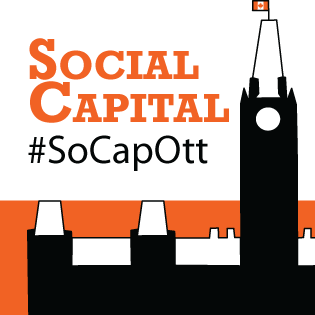
A couple of years ago I saw a friend whose
Facebook status update expressed confusion at the value of
Twitter and declared that
StumbleUpon was the winner in his opinion. At the time, I gave a mental “hmph” and moved on. Twitter was already becoming very valuable to me at that point and its value has only continued to grow. I didn’t see how StumbleUpon could compete.
Until now.
I joined StumbleUpon late last year (2010) and then decided to school myself on it sometime in the Spring of 2011. What I have discovered is a tool that I don’t want to live without in my online activity. Here is StumbleUpon’s description of the tool:
“StumbleUpon integrates peer-to-peer and social networking principles with one-click blogging to create an emergent content referral system. Our patent-pending toolbar system automates the collection, distribution and review of web content within an intuitive social framework, providing users with a browsing experience which resembles “channel-surfing” the web. This architecture has easily scaled to millions of users.”
Simply put, that means that users recommend (like/thumbs up) content and then other SU users get to discover (Stumble) that content once it's in the StumbleUpon repository. The sites you Stumble are based on interests you enter when you set up your StumbleUpon account and as you like/thumbs up sites or dislike/thumbs down sites, StumbleUpon perfects what it delivers to you. User feedback is the foundation on which StumbleUpon is built.
A user who discovers a site first gets to enter the keyword details that will determine who that content is delivered to, so the more accurate the keywords the better to avoid "thumbs down". The more keywords you enter that also apply to the content, the better. (As long as they're truly accurate - remember that!)
One event really sparked my interest in StumbleUpon last spring. A post I wrote on my personal blog, which is small with a modest number of followers got five times the traffic I typically get after I shared it on StumbleUpon. Let me repeat that: It got five times the traffic. As first-day traffic for a piece goes, that one still holds the record.
I started using StumbleUpon more diligently after this incident. I've had similar results and the longer I'm using it (and sharing other's content too) the more regularly I get bursts of traffic to my blog.
Is StumbleUpon a magic formula for growth? Not really. You might convert occasional SU users into regular readers over time, but it's not a recipe for quick growth. It's a tool to get content out there to a wider audience that might not otherwise see it.
It's fine to share your own content - you absolutely should. But don't only share your own content. This is essentially considered spam and is frowned upon. I tend to space out when I thumbs up my own pieces unless I'm being active in promoting others' content. It's important to appropriately distribute content sharing - i.e., share others' more than you share your own. I'm intentionally taking time to thumbs up any great content I read in my RSS reader and spending a few minutes a day
Stumbling to discover what's out there outside of my usual circles. I'm happy to drop out of using Twitter for those few minutes a day to incorporate StumbleUpon into my overall social media repertoire.
How do I make time for another social network?StumbleUpon isn't a full network. I like to think of it as a secondary network. Facebook, Twitter,
LinkedIn, Google+ - those are the heavyweights (and that is debatable when it comes to Google+ for now). The secondary networks are those like StumbleUpon,
Instagram,
Pinterest and others that don't have robust interfaces for engagement.
I set a limit on my StumbleUpon time. It doesn't truly take very long to Stumble a few posts. I can get through about 20 in ten minutes a day. And if I'm on a site that's shareworthy on twitter, I'll often give it a thumbs up too.
The bottom line is that the benefit I derive - from increased traffic to content discovery - is greater than the investment I have to put into it and I'm a big believer in putting quality content out there in every possible place to maximize exposure.
With
20 million already using it, just think how much great content you can find!
Can you Stumble on the go?Yes, StumbleUpon has
mobile applications for Android,
iPhone and
iPad. I am an iThing owner, so I have those versions and they work well. I haven't found an easy way to thumbs up sites from my RSS reader, though. I'm quite disappointed that neither of the readers I use (MobileRSS/Reeder/Feedly) have SU as a sharing option. So, I've been starring anything I want to thumbs up to return to later - not an ideal option at all. Let me know if any of you have a better system!
 How can you get started?
How can you get started?I am not an expert on StumbleUpon. I'm still learning, but I do highly recommend it as a tool - an essential tool. As I learn more, I'll share more with you. For now, I'll leave you with a few more practical links that will help you if you want to dive in right away:
Social Media Examiner -
How to Use StumbleUpon: Your Comprehensive Guide1st Web Designer -
StumbleUpon FAQ, Guides, Tools, Addons And ScriptsE-Junkie.Info -
StumbleUpon: A Stumbler's Comprehensive Guide Part 1Duct Tape Marketing -
5 Step Approach to Learning the StumbleUpon Targeted Traffic TangoMomComm -
StumbleUpon: A Guide to What Not to StumbleThere may be conflicts in best practices presented in these guides and I haven't fully vetted all of the information in them to ensure it is currently accurate so some of the content may be outdated, but they all have some general information that has value to new and existing users to maximize their benefit.
Do you use StumbleUpon? What keeps you going back? If you don't use StumbleUpon yet, does learning more pique your interest? Over the week we go through a lot of content - news and blog posts, how tos and conceptual posts on the state of the internet. Every Sunday we share some of our favourites with you.
Over the week we go through a lot of content - news and blog posts, how tos and conceptual posts on the state of the internet. Every Sunday we share some of our favourites with you.





 A couple of years ago I saw a friend whose
A couple of years ago I saw a friend whose  How can you get started?
How can you get started?